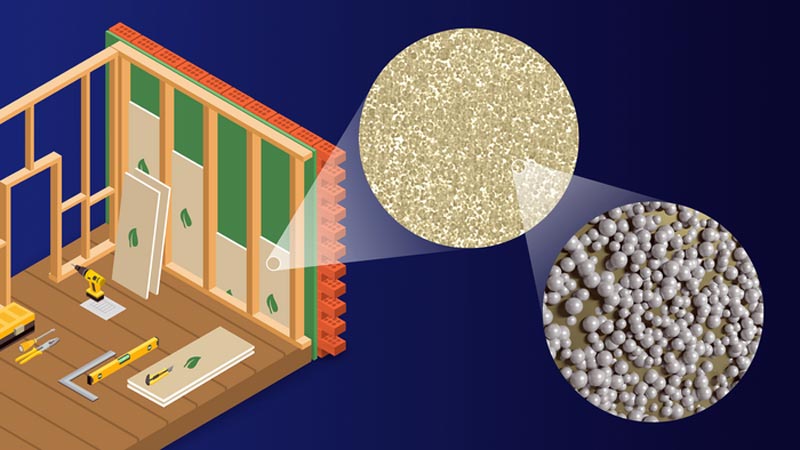
Eco-Friendly Foam Insulation Reduces Energy Loss

Researchers at Oak Ridge National Laboratory developed an eco-friendly foam insulation for improved building efficiency.
Credit: Chad Malone/ORNL, U.S. Dept. of Energy
Greener insulation reduces environmental impact of foam products.
Rigid foam boards used to insulate buildings can prevent energy loss, making homes more efficient at keeping warm or cool. The advantages in energy efficiency, however, are undercut by environmental concerns over polystyrene products. Blowing agents used in foam production, such as hydrocarbons and hydrofluoroolefins, end up in the atmosphere and contribute to global warming.
Scientists at Oak Ridge National Laboratory developed a competitive, eco-friendly alternative made without harmful blowing agents. The nontoxic thermoplastic foam is made using hollow glass spheres and expandable polymer microspheres.
“The combination of these two sources allows us to tailor formulations to maintain the material’s thermal performance across a limited range of densities” said ORNL’s Meghan Lamm. “We are also working with thermoset materials, which offer high-temperature stability, for improved flame resistance.”
“The technology is readily adoptable by industry and opens avenues to develop safer composite foams for a variety of insulation systems,” said ORNL’s Tolga Aytug.
UT-Battelle manages ORNL for the Department of Energy’s Office of Science, the single largest supporter of basic research in the physical sciences in the United States. The Office of Science is working to address some of the most pressing challenges of our time. For more information, please visit energy.gov.
Journal: Polymer
DOI: 10.1016/j.polymer.2022.125652
Media Contact
Karen Dunlap
DOE/Oak Ridge National Laboratory
dunlapkk@ornl.gov
Office: 865-696-5910












